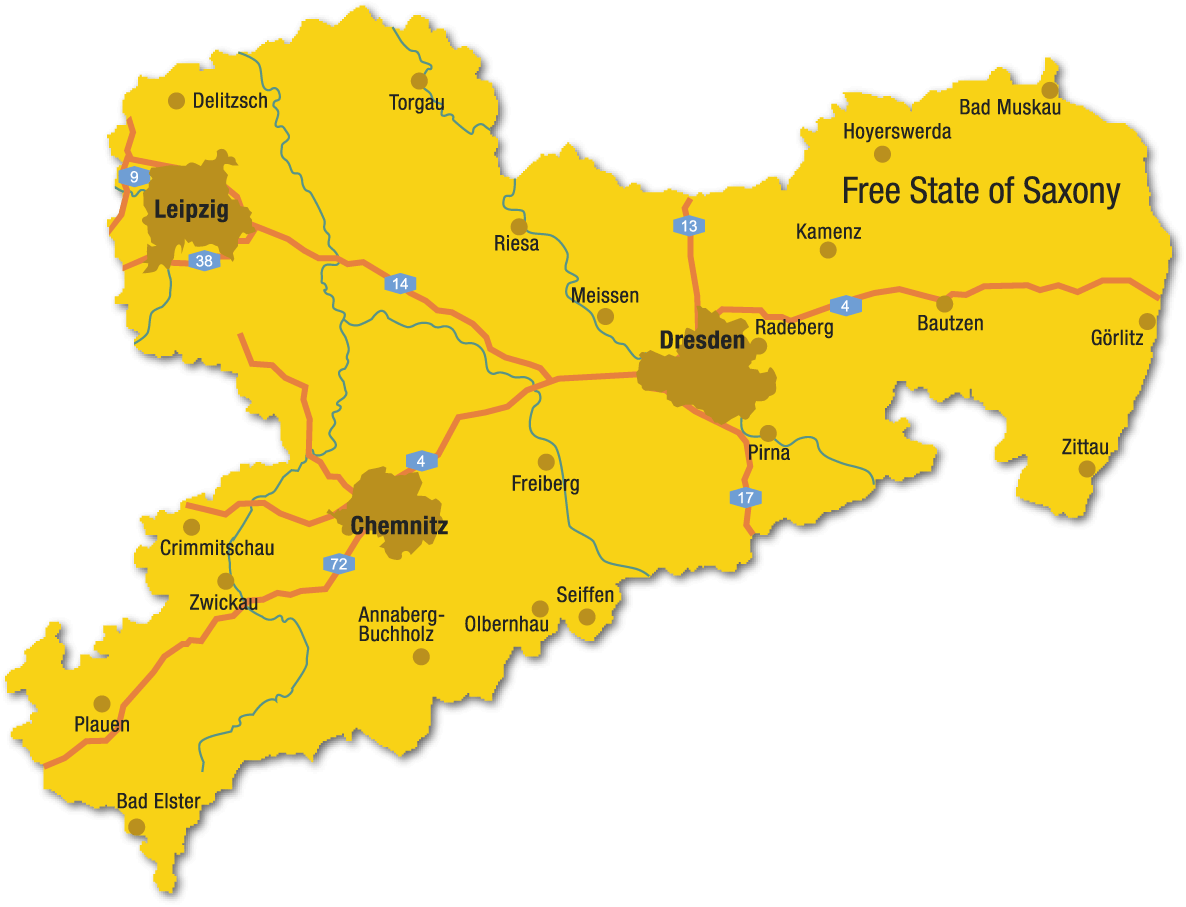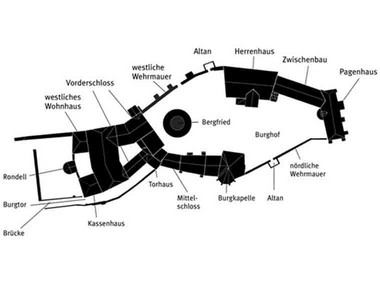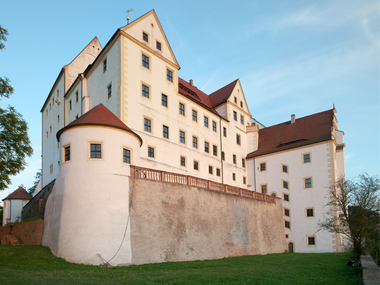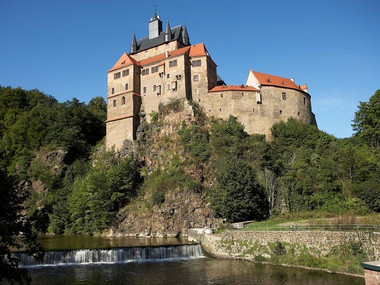A symbol of power carved in stone
Mildenstein Castle – The royal court of Stanisław Leszczyński
In 1046, Mildenstein Castle was mentioned for the first time as part of the burgward organization in the German territory of marches. Emperor Henry IV assigned it eventually in 1084 to Wiprecht von Groitzsch. The Romanesque Castle Chapel emerged around 1100 as one of the earliest preserved parts of the castle.
In 1147, the Leisnig Castle became the house estate of Duke Frederick III of Swabia, the later Emperor Barbarossa. For its strategically favorable location, Emperor
Frederick I promoted it in 1058 to the status of an imperial castle. The donjon and gateway are visible evidence from that time.
Conversion into a noble residence
Margrave William I had Mildenstein Castle converted towards the end of the 14th century for representative purposes. In that time, the Front Castle, the Manor and the Pages’ House were built. However, the castle has never been used as a main residential seat. 15th-century Mildenstein Castle is something like a child-rearing place for the electoral family. Apart from its use as a widow’s seat, the estate became a Wettin administrative office from 1414 on.
Between 1706 and 1707, the Polish King Stanisław Leszczyński stayed at the Mildenstein Castle with about 1,000 people and 400 horses. On October 27, 1706, Leszczyński signed the Treaty of Altranstaedt in Leisnig ...
A Romanticist park with architectural ruins were laid out by the Leisnig Mirus family before the gates of the castle estate from 1798. In the 18th and 19th centuries, the castle also accommodated the local court, the prison and officials’ apartments. From 1890, the collections of the Leisnig Historical and Antiquity Association were displayed, at first, in the rooms next to the Castle Chapel and, from 1910, in the Knights’ Halls.
You want to know more? Have have a look at the chronology of Mildenstein Castle or the literature. Or join our public guided tours to learn about the castle in an illustrated way.
Contact
Mildenstein Castle
Burglehn 6 | 04703 Leisnig
Property of State Palaces, Castles and Gardens of Saxony, non profit
+49 (0) 34321 6256-0
mildenstein@schloesserland-sachsen.de
Opening hours
Subject to modifications.
Ticket rates
- Full rate 8,00 EUR
- Reduced rate 7,00 EUR
Subject to modifications.
Benefits with the schloesserlandCARD
| Free admission to the permanent exhibition |
| Reduced rates apply to enter special exhibition |
Arrival & map
Next City: Chemnitz (50 km)
Arrival information:
Nearest city: Chemnitz (50 km)
How to get there:
· Overview of available parking
By car
via A14, exit Leisnig, follow the signposting.
via A4, exit Hainichen, follow B169 just before Doebeln; exit for Leisnig
By rail
Leisnig Mildenstein Castle can be reached by rail from Leipzig or Chemnitz (change trains in Doebeln for Regionalbahn to Leipzig. The rail station is below the castle (15-min walk). Benefit from discounted DB tickets ›Mittenrein reisen‹
By bike
The Mulde River valley cycle path passes right at the foot of the castle hill. (routing at www.muldentalradweg.de ) There is a connection between the Mulde River valley cycle path and the Elbe River cycling path near Doebeln (www.elberadweg.de)
Parking facilities
There are parking facilities at Marktplatz, Lindenplatz and at Schlossberg (which is the castle’s own free carpark).



